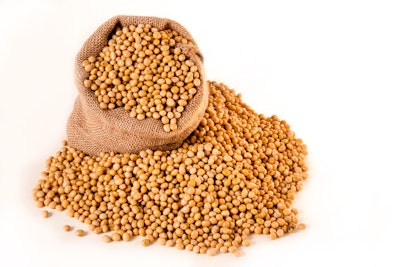
China’s Soy Crush Rebounds
JCI reported China’s soy crush for August was 8.55 million tonnes, up from 7.65 million in July, but under last year’s monthly record of 8.9 million.
The second highest crush rate for the month of August brought the total 2020/21 crush to 85.4 million tonnes.
September crush needs to be 8.6 million tonnes to reach USDA’s projection of 94 million tonnes for the year.
Last year's September crush was a record high for any month at 9.2 million tonnes.
China’s August bean imports were up 815,000 tonnes from last month to 9.5 million tonnes, just under the 9.6 million seen last year.
Cumulative 2020/21 Chinese bean imports are up 4.2 million tonnes to a record 92.9 million.
September soy imports only need to be 4.1 million tonnes to reach USDA’s 97 million tonne forecast, compared to 5.6 million last year.
FBN’s Take On What It Means: Processors increased crush rates as margins finally turned positive during the month. Bean imports were large for the month as customs clearance played catchup. USDA may need to increase its import projection for 2020/21 due to larger shipments. Although improved, weaker than expected Chinese protein demand will be monitored in coming months.

Asian Crop Importers Expect Delays after Ida
Grain and oilseed buyers in Asia are expecting shipping delays of at least one month after Hurricane Ida damaged Gulf Coast terminals last weekend.
The US Coast Guard reopened the lower Mississippi River on Tuesday.
However, many grain-loading facilities and terminals face extensive repairs, causing the backlog.
Trading companies are asking to roll over shipping contracts from September to October. There are also rumors of contract cancellations or Force Majeure.
US soybean inspections were down 96% last week from the previous year; corn was down 69%. Some exports are being rerouted through the PNW.
The slowdown is likely to lead to food inflation fears in Asia.
FBN’s Take On What It Means: Spot and basis bids have been steady or trending downward in the US, as grain handlers prep for the start of fall harvest. A backlog of exports to Asian markets also has played a role. If, as expected, USDA raises its forecasts for grain production in the September 10 WASDE, bids could be further under pressure. Grain reroutes to the PNW may lead to congestion there, affecting bids.
FBN Market Advisory services are offered by FBN BR LLC, dba FBN Brokerage, FBN BR and FBN Market Advisory (NFA ID: 0508695)
The risk of trading futures and options can be substantial and may not be suitable for all investors. Past performance is not necessarily indicative of future results.
This is not an offer or solicitation in any jurisdiction where we are not authorized to do business or where such offer or solicitation would be contrary to the local laws and regulations of that jurisdiction, including, but not limited to, persons residing in Australia and Canada.















